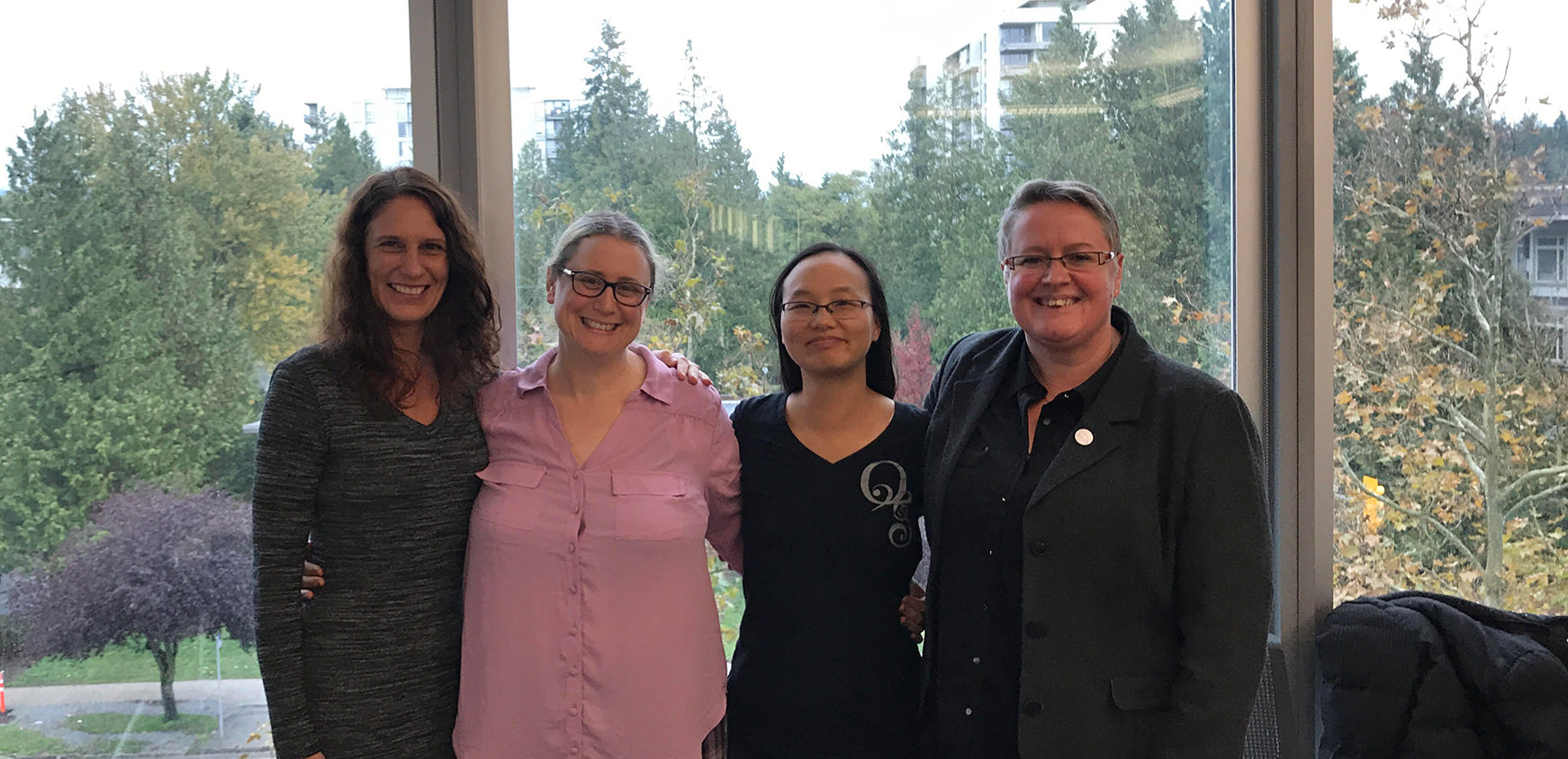Update: We are happy to report that the modules described in this article are now open to the public! Are you interested in learning about how to meaningfully engage with patient partners from diverse backgrounds?
Have knowledge or resources to share? Interested in creating your own Tapestry? You can add your own content or ask questions by completing this Qualtrics form. We want to hear from you!
In this blog post, the second in the BC Support Unit Tapestry project series, Dr. Iva Cheung discusses the populations most in need of representation in patient engagement research. It is these populations that the Tapestry project team will develop educational modules to address. As Dr. Cheung describes, two of the educational modules are already planned, but three will be developed in collaboration with academic leads and patient partners. If you’re interested in developing educational modules for this project, click here.


Jennifer Johannesen
Jennifer Johannesen*, a bioethicist whose writing on patient and family engagement is informed by her experiences as a parent to a child with multiple severe disabilities, said in a 2017 talk that our current approach toward engaging patient partners in research attracts “a particularly homogenous group of well-educated, articulate, wealthy people who can afford to volunteer” and that these relationships “privilege certain kinds of patients who are likely already advantaged.” As a result, “We take the space of people whose presence may actually help to redress some of that unfairness.”
As we mentioned in our previous blog post, the BC SUPPORT Unit’s Tapestry project is a first step in an effort to correct that underrepresentation and to increase diversity in patient engagement in research. Our goal is to produce five educational modules to support academic and diverse patient researchers in forging and maintaining meaningful partnerships. One of those modules will be a primer on diversity in patient engagement in research, and one module will be geared toward engaging patients from the LGBTQ2S+ communities.
The remaining three modules will be decided by you, our community of stakeholders in patient engagement in research.
The gaps—where do we need more resources?
After our search for existing resources (with special thanks to Dr. Emma Morton for her work), we’ve identified four populations where gaps in representation are especially drastic:
Members of racialized communities and immigrants
Almost 30% of British Columbians immigrated from another country, and nearly a quarter are visible minorities
The resources we’ve found, including the BC SUPPORT Unit’s guidance on intercultural competency and the BC Ministry of Health’s Intercultural Community Engagement Tip Sheet advise research teams to consider issues such as
- cultural differences in understanding illness,
- unfamiliarity with the role of research, and
- language interpretation.
Although many resources exist for intercultural competency in health service delivery, gaps remain when it comes to resources for patient engagement in research, particularly in engaging refugee and immigrant populations in longer-term relationships.
Deaf and Disabled people
Almost 25% of British Columbians live with at least one disability or long-term health-related problem that affects their daily functioning
We could find very few resources specifically for engaging Deaf and Disabled people, including people with chronic illness, episodic disabilities, and mental health–related disabilities — and this gap needs to be filled. The resources that mention disability or chronic illness in passing advise carefully considering the choice of meeting space not only to address physical and environmental (for example, scent, lighting, or acoustic) barriers to access, but also to acknowledge that meeting in medical settings like hospitals can be exhausting or traumatizing for people with frequent contact with the health system. Strategies to compensate Deaf and Disabled patient partners may have to account for the effects of that compensation on disability assistance. Research teams should also minimize barriers to communication to engage people with visual, hearing, cognitive, and other communication disabilities.

Residents of remote communities and rural areas can be difficult to engage in patient-oriented research.
Residents of rural and remote communities in BC
12% of British Columbians live in rural areas
The Ministry of Health’s Rural and Remote Engagement Tip Sheet and an article in the Patient Experience Journal, “Engaging rural residents in patient-centered health care research” by Michelle Levy, Cheryl Holmes, Amy Mendenhall, and Whitney Grube, name the main barriers to patient engagement in rural and remote areas. These barriers include unreliable internet access, high costs of transportation for in-person meetings, and engagement fatigue because of the small pool of patient partners. These resources offer some suggestions to overcome these barriers, but this issue deserves more dedicated attention and tailoring for BC’s population.
Indigenous communities
5.9% of people in British Columbia are Indigenous
The BC SUPPORT Unit has a list of resources for fostering research with Indigenous communities, which suggests, among other strategies:
- developing cultural humility and acknowledging Indigenous ways of knowing,
- understanding cultural safety,
- learning the devastating intergenerational impacts of colonialism, including the effects that persist in our heath care system and in health research, and
- committing to community consultation and the principles of data Ownership, Control, Access, and Possession (OCAP).
Health research can always do more in an ongoing effort toward reconciliation, and patient engagement offers a concrete opportunity to put these principles into practice.
Help build an educational module to fill these gaps
For each of these groups, we’re looking for
- a patient partner lead
- an academic research lead
to develop an educational module. The patient role is compensated.
We’ll create modules for three of these groups for sure and may be able to accommodate the fourth if there are enough interested people stepping forward to be team members.
If you’re interested in leading one of these modules or have suggestions for possible leads, please contact me, Iva Cheung, or Erin Michalak, BC SUPPORT Unit’s Patient Engagement Cluster Lead. We hope to have our teams defined in December 2019.

Team members Dr. Erin Michalak, Dr. Michelle Walks, Dr. Iva Cheung, and Beverley Pomeroy gathered on October 16th to plan the LGBTQ2+ educational module.
Other populations of interest
Several other populations are underrepresented, but our project’s scope means that we can’t create educational modules for these groups at this time. We aim to address the most pressing needs while evaluating whether the educational modules are an effective way to promote diverse engagement. If they’re fruitful, we’ll have a solid foundation and process upon which we can build other modules in future projects.
For the time being, we’re sharing some of the key resources we’ve found for engaging these groups so that you can get started on your own, if you’re interested.
Engaging older adults
- Seniors with Complex Medical Conditions Engagement Tip Sheet from the BC Ministry of Health
- Engaging older adults in healthcare research and planning: a realist synthesis, by Heather McNeil, Jacobi Elliott, Kelsey Huson, Jessica Ashbourne, George Heckman, Jennifer Walker & Paul Stolee, in Research Involvement and Engagement
- Developing a Research Participation Enhancement and Advocacy Training Program for Diverse Seniors (DREAMS), from the Patient-Centered Outcomes Research Institute
Engaging youth
- Resources for engaging youth, from #HowToEngagePatients
- Engaging Young Adults, from Patient Voices Network
- Youth Engagement Resource Guide, from Engage 4 Health (Nova Scotia Health Authority)
Engaging people with low income
- Recruitment and Engagement of Low-Income Populations: Service Provider and Researcher Perspectives by Laurie Schnirer and Holly Stack-Cutler
- Research 101 : A Manifesto for Ethical Research in the Downtown Eastside, by Louise Boilevin, Jules Chapman, Lindsay Deane, Caroline Doerksen, Greg Fresz, DJ Joe, Nicolas Leech-Crier, Samona Marsh, Jim McLeod, Scott Neufeld, Steven Pham, Laura Shaver, Patrick Smith, Martin Steward, Dean Wilson, and Phoenix Winter
- Peer Payment Guide, by Annelies Becu and Lauren Allan, from the BC Centre for Disease Control
Engaging people who use substances and people with lived experience of mental illness
- Mental Health / Substance Use Care Engagement Tip Sheet form the BC Ministry of Health
- How to Involve People Who Use Drugs, from the BC Centre for Disease Control
- Engage People with Lived Experience of Mental Health Conditions and Addictive Behaviours Workbook, from Canadian Mental Health Association British Columbia
General resources on patient engagement in research
If you’re looking for general resources about patient engagement in research, a vibrant community of patient partners, academic researchers, and patient-oriented research advocacy organizations has crowdsourced a growing list of tools, which you can use and add to (with special thanks to @brynphd and @couragesings, patient-oriented research stalwarts on Twitter).
Help expand our list of tools for diversity
The resources we’ve listed here are just the start. If you know of any other free resources that support diversity in patient engagement in research, please send them along to me.
*Johannesen will be a keynote speaker at the BC SUPPORT Unit’s 2019 Putting Patients First conference later this month.
Previous Blog Entries about the Tapestry Project
British Columbia’s population is richly diverse. Shouldn’t patient engagement in research reflect that reality?





Leave a Reply